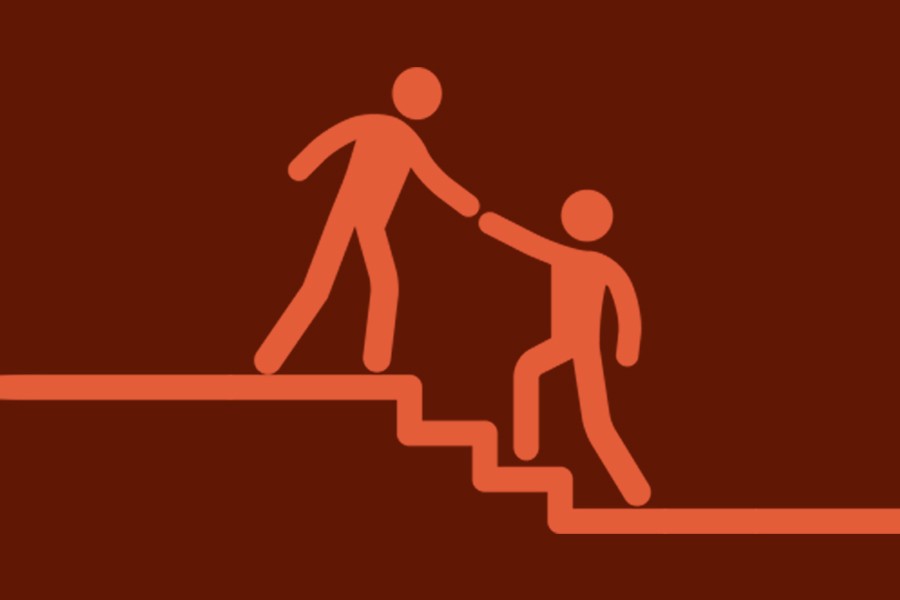
Published :
Updated :

Although Bangladesh has halved poverty rate since 2000, one-fourth of the country's population remain still poor. Moreover, some 20 million people are living in extreme poverty.
This was disclosed by a senior World Bank official, Dandan Chen, this week while addressing a symposium titled Adaptive Social Protection: Technical and Policy Consideration. Mr Chen is the Bank's acting country director in Bangladesh.
In fact, formulation of an effective plan of action has become urgent for freeing the poor and extreme poor communities and slum dwellers in the cities from poverty and hunger. The existing problems and prospects of the underprivileged community should be incorporated in the action plan so that desired results are achieved in this regard.
In the wake of rising number of slums, poor and extreme poor people, the cities need more anti-poverty schemes to eradicate urban poverty alongside eliminating other poverty-related social problems like child marriage and drug addiction as those are also on the rise.
However, a study puts Bangladesh ahead of India and China in poverty reduction scorecard. The country made remarkable progress in reducing the number of chronically food insecure citizens -- from 40 million to 20 million -- over the last decade. But still, Bangladesh has quite a big number of hungry people.
In spite of the fact that the country has improved the status of nutrition of the under-five children in the last two decades, it still has a long way to go to combat malnutrition. In order to reduce the vulnerability of the rural poor, the report suggested finding a permanent solution to the seasonal food crisis caused by lack of work.
Bangladesh is trying to address the issue of hunger with its available resources and in the last two decades it has succeeded in improving, to some extent, the health of the under-five children. There is a need for increasing investment in sustainable agricultural development to address the country's poverty situation. Any discussion on hunger and intervention must put the poor, marginalised sections and women at the centre of planning and actions to follow.
During the last one decade, the number of poor people in Bangladesh declined by 26 per cent. Poverty reduction was closely linked to the growth in labour income and changes in demographics. For further reduction in poverty, the country needs policies and coordinated multi-sectoral approaches that respond to the needs of the growing population of young adults.
Though the national poverty rate fell in both rural and urban areas, the speed of reduction was much slower in urban Bangladesh, largely because of slower rate of poverty reduction in Dhaka and increasing poverty in Chattogram.
There is, indeed, no progress in reducing extreme poverty in urban areas. The proportion of the urban population living in extreme poverty was 7.7 per cent in 2010 and 7.6 per cent in 2016. An estimated 35 per cent of the population in rural areas lives below the poverty line. They suffer from persistent food insecurity, own no land and assets, and are likely to suffer serious illnesses or disabilities.
Though the people living in villages may own a small plot of land, some livestock and have enough to eat, their diets generally lack nutritional value. As a result of health problems or natural disasters, they are at the risk of sliding into poverty. Women are among the poorest of the rural poor, especially when they are the sole heads of their households. They suffer from discrimination and have few earning opportunities, and their nutritional intake is often inadequate.
Sustained poverty reduction needs coordinated multi-sectoral action. Investments to raise agricultural productivity and growth in the demand for salaried work in the manufacturing and service sectors are crucial for enhancing growth in labour force income.
In the circumstances, public representatives and others concerned need to think of ways and means to formulate an action plan to free the poor and extreme poor communities from the vicious cycle of poverty and hunger.
szkhanfe@gmail.com


 For all latest news, follow The Financial Express Google News channel.
For all latest news, follow The Financial Express Google News channel.